Text
The Historian, Chapter 4
For all his attention to my historical education, my father had neglected to tell me this: history's terrible moments were real. I understand now, decades later, that he could never have told me. Only history itself can convince you of such a truth. And once you've seen that truth - really seen it - you can't look away.
Summary: Back home in Amsterdam, n starts to do her own research of Vlad Ţepeş. A kind librarian, a man N feels would be the sort of person she’d like as a grandfather, helps her locate some information about him. Ni is deeply disturbed by what she learns, but that doesn’t stop her from asking Paul to tell her more. He agrees to tell her everything, but that he can’t bear to give her all the information at once.
Some time later Paul takes N with him on a working trip to Milan in Italy, making a detour to visit old friends, Massimo and Giulia. There, No learns that Massimo too knew professor Rossi, and that he disappeared without a trace, never to be seen again. The next day, while sightseeing in Siena, N implores her father to tell her more about Rossi, and Paul reluctantly agrees.
My thoughts: Reading The Historian chapter by chapter, makes me realize why some people find it too slow. I’m a fast reader, so I never noticed before, but if one only reads this book a chapter at the time, well, then some chapters contain very little. In this chapter we really only learn a little bit more about the history of Vlad Ţepeş, and that Rossi disappeared.
One of the fun things with this re-read is that when I look into the places depicted in the books, dragons keep popping up, though they are not mentioned in the book. In Montepulciano, which Paul mentions as an old town, there is a painting of St George and the dragon in a church. And in Siena they visit Palazzo Pubblico, which is located close to Drago, a neighbourhood of Siena which has had the dragon as an emblem since the Middle Ages.

#dracula#the historian#elizabeth kostova#vampire#reading the historian#vampire literature#vlad tepes#dark academia#dracula daily
1 note
·
View note
Text
The Historian, Chapter 4
In Istanbul there is a little-known repository of materials, founded by Sultan Mehmed II, who took the city from the Byzantines in 1453. This archive is mostly odds and ends collected later by the Turks as they were gradually beaten back from the edges of their empire. But it also contains documents from the late fifteenth century, and among them I found some maps that purported to give directions to the Unholy Tomb of a Turk-slayer, who I thought might be Vlad Dracula. There were three maps, actually, graduated in scale to show the same region in greater and greater detail.
Summary: Paul continues to narrate Rossi’s story, and that Rossi found out in Istanbul that Dracula is still alive. While doing summer research in Crete, Rossi makes a detour to Istanbul, and finds three maps. They don’t resemble Lake Snagov, where Dracula is officially entombed, and at the place the tomb is located, a small dragon is depicted, and underneath the legend 'In this spot, he is housed in evil. Reader, unbury him with a word.
Rossi reads them out aloud, and in the same instant a door slams, footsteps are heard, and a man, who is not one of the librarians, approaches Rossi. The man tells Rossi he has no right to look at the maps, even threatens him, and takes the map with him when he leaves. But not before Rossi has noticed that the man has two half-healed puncture marks on his throat.
When Rossi returns to his hotel he finds that all his notes about the maps have been stolen, and he returns to Crete. He tells Paul that he then gave up his research about Dracula, and that he and Paul will never discuss this matter again. He gives Paul a sealed package of notes before he leaves.
Here Paul stops talking, and N realizes he is in tears. When she looks around she notices a tall man in a dark suit walking away from them, and she finds she can’t stop looking after him.
My thoughts: After Rossi’s declaration that he thinks Dracula is still alive, it seems a bit strange that he can be so certain, considering that the only thing he found was a map of his tomb, albeit in the wrong place. It seems that there is more to this story than either Rossi, or perhaps Paul, is prepared to tell.
This chapter amps up the uncanny. Rossi reading the words aloud seems to set things in motion. However, it can hardly be that Dracula is awoken by them, as the man who takes the map has already been bitten. I think that reading the legend aloud rather focuses Dracula’s attention on Rossi, making him direct one of his minions to him. And who is the man N sees? Dracula, or perhaps his minion from the library?

#the historian#elizabeth kostova#reading the historian#dracula#vampire#vampire literature#vlad tepes#dracula daily#dark academia
2 notes
·
View notes
Text
The Historian. Chapter 3
Ragusa, far below us, an ivory city with a molten, sunlit sea breaking around its walls, roofs redder than the evening sky inside their tremendous medieval enclosure. The city sat on a large round peninsula, and its walls looked impenetrable to sea storm and invasion, a giant wading off the Adriatic coast. At the same time, seen from the great height of the road, it had a miniature appearance, like something carved by hand and set down out of scale at the base of the mountains. Ragusa's main street, when we reached it a couple of hours later, was marble underfoot, highly polished by centuries of shoe soles and reflecting splashes of light from the surrounding shops and palaces so that it gleamed like the surface of a great canal.
Summary: Home again, Paul is reluctant to continue his tale. But some time later, he takes her to a trip to the city Ragusa, and there Paul promises to continue his story the next day.
My thoughts: Not much happens in this chapter, it’s mainly a description of Ragusa. Which is actually Dubrovnik, then a city in Yugoslavia, now in Croatia. The description in The Historian is spot on. I visited when I was 19, and entering the Old City at night will always be one of my most vivid travel memories. It’s a beautiful and magical place.

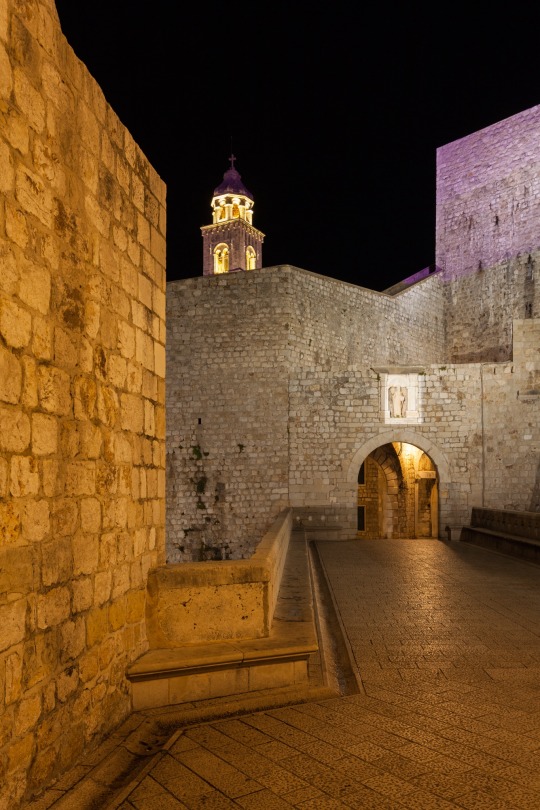


#dracula#the historian#elizabeth kostova#vampire#reading the historian#dracula daily#dubrovnik#vampire literature#ragusa#dark academia
2 notes
·
View notes
Text
The Historian, Chapter 2
So, the Carpathians. That's always been a mystical spot for historians. One of Occam's students traveled there - by donkey, I suppose - and produced out of his experiences a funny little thing called Philosophie of the Aweful. Of course, the basic story of Dracula has been hashed over many times and doesn't yield much to exploration.
Spoilers below the cut.
Summary: N’s father tells her how he, when he was a graduate student in USA, found the book with the dragon on his table at the university library. The book intrigues him, and when he notices the name Drakulya on a banner in the dragon’s claws, he immediately recognizes it both as a name for the Wallachian ruler Vlad Ţepeş in the 15th century, as well as the more well-known movie monster. He even does a little research into the history of Vlad Ţepeş, and, later, he brings the book to his adviser, the brilliant professor Rossi. To his surprise he finds that Rossi too found a book with the dragon print among his books back when he was a graduate student. This book looks different, but the print is identical. Rossi is very concerned, reveals that he too was driven to research Vlad Ţepeş, and then reveals that he has found out he is still alive.
At this point N’s father abruptly stops, and despite N’s urging he refuses to continue during this trip. When they leave the teahouse, he is very agitated and seems to look for something, but N can’t see anything. N soon learns that her father’s story only comes in short bursts. She starts to wonder if that is because he needs to protect something, his strength perhaps, or even his own sanity.
My musings: In this chapter we learn that N’s father is called Paul, and that he must have been born in 1928. As of now I can't recall if we ever learn the exact year his story takes place in, we at least know it must be in the 1950s. Graduate students in the USA seem to be around 22 to 28 years old, narrowing it down to 1950-56. And as N, 16 years old in 1972, must have been born in 1956, so I think it’s safe to narrow it down even further, to 1950-55.
I had forgotten that the reveal of Vlad Ţepeş continued existence comes this early in the book. Somehow I always feel it comes much later.
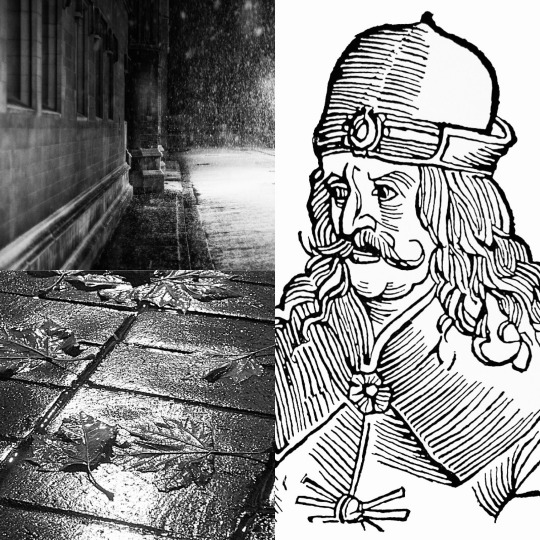
#dracula#the historian#elizabeth kostova#vampire#reading the historian#vampires#vampire literature#vlad the impaler#vlad tepes#dracula daily#dark academia
2 notes
·
View notes
Text
At a table near the window we drank tea with lemon, scalding through the thick cups, and ate our way through sardines on buttered white bread and even a few slices of torta.
I confess, I love reading about meals in the books I like. A love that started as a child, reading The Lion the Witch and the Wardrobe for the first time, which contains both Edmund’s enchanted treat given to him by the White Witch, and, much more alluringly, the tea in front of a cozy fireplace that Mr. Tumnus serves Lucy.
Personally I'm skeptical about sardines on bread, but sitting in an Art Nouveau tea house while it rains outside, drinking hot tea, sounds lovely. Especially while having a piece of torta. But what kind? Torta in itself isn’t a specific recipe, the word simply means cake. So I did a little research on cakes popular in Slovenia, and found a number of delicious sounding ones. And then I looked a bit further, and realized some of them were quite unlikely to be eaten by N and her father, on an ordinary day. Torta Ljubljana is a chocolate cake that sounds delicious, but wasn’t actually created until 2012. Potica and Torta Plava Laguna make my mouth water, but they are cakes for holidays and special events.
I have settled on either some kind of Gibanica cake, a multi layered cake with cottage cheese and egg, that can be either savory or sweet. I have already decided that I’m going to try to make Prleška gibanica, which has a filling where the farmer’s cheese and egg get additional yumminess from sugar, sourcream and butter. But they might also have had a piece of Kremna rezina (Bled Cream Cake) with a filling of vanilla custard and whipped cream.
What do you think they would have chosen?

#the historian#reading the historian#elizabeth kostova#dracula daily#dracula#cake#tea#literary meals#eating in books
4 notes
·
View notes
Text
The Historian: Part One, Chapter 1.
A little housekeeping. The Historian has several narrators, all, but the teenaged narrator in the 1972 parts, are named. So for ease, I will call her N, instead of the nameless narrator. Also, these posts will contain spoilers.
Summary:
How these papers have been placed in sequence will be made manifest in the reading of them. All needless matters have been eliminated, so that a history almost at variance with the possibilities of later-day belief may stand forth as simple fact. There is throughout no statement of past things wherein memory may err, for all the records chosen are exactly contemporary, given from the standpoints and within the range of knowledge of those who made them.
Part One starts with this quote from Dracula, by Bram Stoker. It reinforces the idea that The Historian is a true account, a collection of papers that tells a story that has really happened.
In chapter 1 we learn a bit about N. She's 16 and lives with her diplomat father in Amsterdam. Her mother died as a baby, and she lives a very sheltered life, mostly occupied with her studies. At this point N thinks her father’s effort to shield her is because he is her only parent. But the reader may wonder if it’s not to protect her from something. One day she finds a book, and collection of letters in her father’s library. N doesn’t tell us what she finds in the book that captivates her, and she only reads a little from the first letter before she puts it away, but it’s a rather sinister paragraph:
My dear and unfortunate successor:
It is with regret that I imagine you, whoever you are, reading the account I must put down here. The regret is partly for myself – because I will surely be at least in trouble, maybe dead, or perhaps worse, if this is in your hands. But my regret is also for you, my yet-unknown friend, because only by someone who needs such vile information will this letter someday be read. If you are not my successor in some other sense, you will soon be my heir – and I feel sorrow at bequeathing to another human being my own, perhaps unbelievable, experience of evil. Why I myself inherited it I don’t know, but I hope to discover that fact, eventually – perhaps in the course of writing to you or perhaps in the course of further events…
Instead of asking her father about her find at once, N begs to follow him on his next diplomatic journey, something she has so far never been allowed to. He agrees, and she accompanies him to a Yugoslavian city she calls Emona. Well there, N tells her father what she has found, and now it is revealed that the book contained the printed image of a dragon, and she asks him to tell her about it, which he reluctantly agrees to do.
The real name of Emona is Ljublana, which today is the capital of Slovenia. N points out this is where the story starts, but up until this re-read I could never understand why Kostova chose this particular place. Not until this time, did I notice that N and her father cross a bridge, guarded by bronze dragons. The Dragon Bridge, Zmajski most, was built in 1901, and as you can see from the picture, the dragons are impressive. By walking over it, N truly walks into the start of this story, where the motif of the dragon will return again, and again. Ljubljana also has a dragon on the city’s coat of arms, referring to a legend that this is the place where the Greek hero Jason slayed the dragon. Or, possibly, it’s about the legend of St. George and the dragon. Either way, Ljubljana is a city of dragons, and I find it very fitting to start a book about Dracula here.


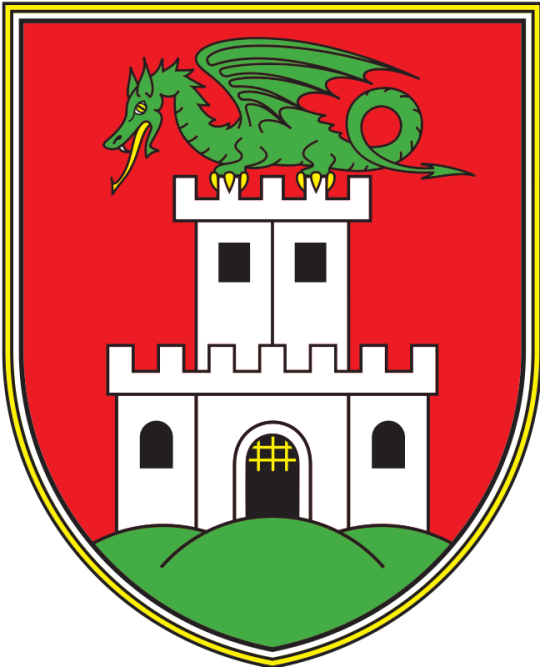

#the historian#reading the historian#elizabeth kostova#dracula#dracula daily#vampire#vampires#vampire literature#vlad tepes#vlad the impaler#dragon art#dragon bridge#amsterdam#ljubljana#dark academia
3 notes
·
View notes
Text
This little corner of tumblr has always been a bit all over, as I didn’t really have a plan for it. This has, at least temporarily, changed. For the foreseeable future I’m doing a deep-read of Elizabeth Kostova’s novel The Historian. Every Monday I will post an analysis of a chapter, and in between there will be posts relevant to the book, like fashion, geography and food.
You are all more than welcome to join in on the discussion, and sharing posts! All my Historian posts will be tagged #reading the historian.

#reading the historian#the historian#elizabeth kostova#dracula#vampire literature#vampires#vampire#vlad tepes#vlad the impaler#dracula daily#old books#dark academia
4 notes
·
View notes
Text
Map over Europe, after WWII.
As so much of The Historian takes place in the 1950- and 70s, it may be interesting with a map of how Europe looked then. Germany was split into West and East Germany. Many countries, like the Baltic states and Ukraine, were parts of the Soviet Union. Yugoslavia is today the countries Croatia, Slovenia, Macedonia and Bosnia and Herzegovina. Czechoslovakia is now the Czech Republic and the Slovak Republic.
During the Cold War, the Iron Curtain effectively split west and east Europe from each other. The countries behind the Iron Curtain were the Soviet Union, Albania, Poland, East Germany, Czechoslovakia, Hungary, Romania and Bulgaria. To travel into these countries from west Europe was possible , if a bureaucratic hassle. To travel from east to west was, depending on the country, difficult to near impossible. As we will see, this has bearings to what happens in The Historian.

#the historian#dracula#reading the historian#elizabeth kostova#vampire literature#vampires#vampire#vlad tepes#vlad the impaler#europe#maps#dracula daily
3 notes
·
View notes
Text
Teenage fashion, 1972.
As the first chapters of The Historian takes place in the early 70s and the unnamed narrator is 16, I thought it could be fun to have a bit of a visual to what she could have worn.

#reading the historian#the historian#elizabeth kostova#1970s fashion#1970s#dracula#vampire literature#vampire#vlad tepes#vlad the impaler#dracula daily
10 notes
·
View notes
Text

The Historian: A Note to the Reader
This is not a real chapter, but merely a foreword that establishes a few things. It tells us that the voice of this story is female, that she is re-telling what happened to her 36 years earlier, when she was a young girl. So we know the narrator is middle-aged. We also learn that she works in the academic field, and that she is probably single and childless; of all the people she mentions, none are family. She also names herself a historian, and it’s very easy to assume she is the historian that the title of the book alludes to.
Most of this foreword establishes that this is a text carefully created from sources. It’s meant to be academic, verifiable. Real. But there is also a sinister thread winding through it, a warning that when searching for history,it may reach forward, and it may cause harm.
It ends with a hope a reader would see this book for the cri de coeur* it is, and then it gives a place and a date. Oxford, England, January 15, 2008.
And, by complete coincidence, I started this re-read on January 15.
*According to Merriam-Webster, a cri de coeur is ”a passionate outcry (as of appeal or protest)”
Part 1
#the historian#elizabeth kostova#dracula#vampires#vampire#vampire literature#vlad the impaler#vlad tepes#reading the historian#dracula book#books#old books#dark academia#dracula daily
4 notes
·
View notes
Text
A much better plot summary than my lame attempt!
Hey, to everyone out there who’s enjoying Dracula Daily, I would like to heartily recommend The Historian by Elizabeth Kostova, the best vampire novel since the original (possibly better than the original!).
It is a novel of Dracula - a truly menacing, horrifying Dracula. In an echo of the way Dracula is told via documents - letters, diaries, etc - The Historian also relies heavily on them, from letters to journals to family stories to centuries-old historical documents. It’s told in a nested style through three narrators, all of whom are historians - a young woman in the 1970s, her father in the 1950s, and his thesis advisor in the 1930s - with the letters/diaries/stories of the earlier narrators being experienced by the later ones. In this way, it’s told across three different eras of Europe and gets into all the real historical complexities and context of those periods, such as the Cold-War-era difficulties and dangers of carrying out travel and investigations in eastern Europe. It also draws in vampire mythos from a wider range of places than the original, including a truly fascinating stint in Istanbul.
It moves continually back and forth throughout the three narrators and time periods in a really delightful way, and all of the characters are powerfully engaging. On top of this, it can be a genuinely frightening and chilling read at some points - it’s captured the art of eerie, building horror without gore or cheap scares.
If you like history, or Dracula, and especially if you like both, you are going to love this book.
350 notes
·
View notes
Text
Understated is so much better!
hey while i'm in my vampire state of mind, please consider reading Elizabeth Kostova's novel The Historian. May I introduce it as I first met it:

... or near enough. The copy I had was almost entirely white, the lettering merely standing out on the cardboard, no embellishment whatsoever. Or at least that's how I remember it. It was so... nondescript.
I was a bookish teen when I came across this book, and its pale cover and sparse description enticed me. It felt good and weighty in my hands. It promised secrets and mystery. I didn't realise anything was up, for a bit, until a date caught my attention: it was from a panel discussion from... a few years in the future? Surely the date was a typo. I kept going.
Letters. Journal entries. Newspaper clippings. Phone call transcripts. I was about a quarter of the way in before they dropped the name Dracula, and HOLY SHIT suddenly everything made sense. Suddenly the casual records (out of order, missing and replaced later OR recreated from memory) made sense, and the casual background white noise of fear became Front And Centre Terror as I realised who was the focus of the story.
"Child... where is your father?" FUCK. I had NIGHTMARES from that line alone.
I loved it. I kept it overdue from the library and no-one cared, no-one requested it. It's like they didn't realise the gold they had here, in this simple white cover.
A few years later I was out and about, and I saw a copy in a bookstore where someone had decided subtlety was out of style and they slapped THIS GUY on the cover.

Sure. Okay.
They have since re-released with a more understated cover...
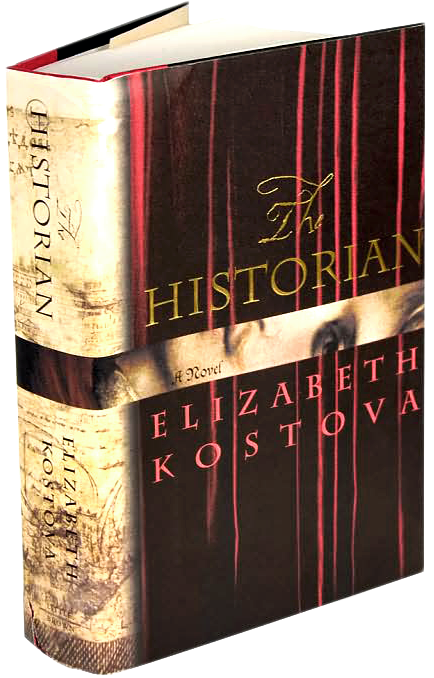
... though I miss the white cardboard and the simplicity, the way the story itself was a shock and surprise. Any fans of Dracula are going to love this one. Please enjoy.
42 notes
·
View notes
Text

About once a year I feel the urge to re-read The Historian by Elizabeth Kostova. It’s one of my favorite books, and I have the idea to do more of a deep read of it. Anyone wants to join in. I’m planning to drop a chapter every Monday, starting with the Prologue on January 15.
In 1972 the teenage protagonist is living with her American diplomat father in Amsterdam.She has no memories of her mother, and is, on the whole, quite content with her life. But one day her father disappears, and while she goes looking for him, she also starts to learn how he, with a young woman called Helen, made a similar quest after his tutor, in the 1950s. And slowly, both the protagonist, and the younger version of her father, realizes that they are also hunting for Dracula.
The book is some 700 pages, and takes place in several countries, and during three timelines. It’s also pretty slow-moving at places. Personally I love all this. It also entwines the literary Dracula with the real Vlad Tepes, another thing I always enjoy.
My own interest in vampires, as well as the historical Dracula, was kick-started by a documentary called In Search of Dracula, narrated by Christopher Lee. He also plays both versions of Dracula. If you want to have a little more background before reading The Historian, this documentary is a good place to start.
<iframe width="560" height="315" src="https://www.youtube.com/embed/pC_9GJv3a0g?si=AwuWKyj_i7qHpmBD" title="YouTube video player" frameborder="0" allow="accelerometer; autoplay; clipboard-write; encrypted-media; gyroscope; picture-in-picture; web-share" allowfullscreen></iframe>
youtube
#the historian#elizabeth kostova#dracula#vampire#vampires#vampire literature#christopher lee#in search of dracula#reading the historian#vlad the impaler#vlad tepes#Youtube#dracula daily#dark academia
4 notes
·
View notes
Text
Taking Notes for Witchcraft
You'll see the advice of "write everything down" everywhere, and for good reason. It's a fundamental skill when studying anything, in my opinion. You can be a great reader and know all the right ways to spot a bad source, but none of that matters if you aren't keeping notes. A student is only as good as their note-taking skills, and all witches are students.
But how do you take notes?
Well, first of all, take note of this: I'm not talking about a grimoire. This isn't about writing proven spells in a pretty notebook. This is about writing down everything in a non-judgmental, kind of messy, comprehensive log. It should have a standard layout or template to make it easier to use and look back on, but otherwise, it's a working document for your eyes only.
There are countless ways to keep notes on anything. If the school system failed you (as it did many of us), chances are, you weren't ever taught how to take notes. You were just told to "write that down" and never looked at it again. You're not alone! You, too, can learn how to take not just notes but good notes.
Fundamentals of Note-Taking
The important thing to remember here is that notes are for you. There is no test to pass, no professor to impress, no essay to write. These notes are meant to help you in your magical and/or spiritual practice. But what's the purpose of taking notes, if there's no one and nothing forcing you to take them? In my mind, there are a few:
Absorbing new information by associating a physical movement with the topic (as in, remembering writing something down and using that to recall the information)
Being able to go back and reread information you've already gone over, creating a reference document for future use
Making note of thoughts, opinions, and ideas in the moment so you remember them later
With these basic purposes in mind, you might think to yourself, "Oh, that's easy! Just write everything down. Easy peasy." But to make notes not only effective in the moment for absorption and having the information in one place, they also have to be organized. Writing things down willy-nilly is fine right up until the moment you're spending 20 minutes looking for one specific note buried in a pile of loose, unlabeled papers.
So here are my (very opinion-driven) guidelines for taking notes on anything:
Notes must be kept in a dedicated, bound notebook or dedicated digital file system. Not a binder, not in loose-leaf pages, not on scraps of paper. In a notebook. Spiral notebooks are fine, but I prefer something I can't rip pages out of. I have both a digital system and a notebook system; the notebook is for raw notes and unfiltered thoughts, whereas the digital system is more polished (my actual grimoire).
Notes must be kept in date order. Chronologically! Not by subject. No jumping around the notebook, either. It doesn't matter if one page has a list of recipes to test and the next is detailing an odd dream. If they happen on the same day, they exist together.
All pages must follow a template. I have several templates for various subjects -- one for test recipes, one for completed recipes, one for spells, one for research topics... Some are more rigid than others (recipes in particular). You can use any template or method that you want, so long as it works for you. What matters is that they're all the same every time.
The template must include the date, a title, and the purpose or a summary of what the notes are about. This makes it easier to remember when I did something, what it was, what the contents of the notes are, and why I was taking the notes later on.
Number your pages. A pre-numbered notebook is ideal, but you can always add the numbers yourself.
Notes have to be legible. It just has to be legible to you. If your handwriting sucks (like mine), that's fine so long as you can read it later. But this also means making an effort to use language you'll understand. Don't use fancy script you can't read or big words you don't actually understand.
Write in pen! Controversial, maybe! But you should take notes in pen, never pencil. For one, pen won't smudge and fade like pencil will. For another, writing in pen prevents you from erasing your thoughts in the moment. You shouldn't be afraid of making mistakes or crossing things out. Plus, erasing destroys paper. Just don't do it.
Write in two or even three colors. The third reason to use pen! When I write notes, I usually write my template out in black. Then, I'll fill in the basic information in the same black pen. The "actual notes" are taken using a colored pen (blue, often). As I take notes, I usually have thoughts and ideas outside of the information I'm trying to take down. To make these more clear and easier to find later on, I write them down in a third color (red or another fun color).
Let yourself be a little disorganized and "ridiculous." Look. I know I'm saying to use templates and write neatly. But these notes are for your eyes only. You can write things down that you don't think will be actually useful later. Jot down that this detail made you think of that person. Scribble doodles in the margins. Whatever. If it's not going to impede your note-taking, it doesn't matter.
But also, if you start reading a book today and don't come back to it until next week, don't pick up the notes on the prior page. Start a new page. The title should reflect that it's a continuation, but don't skip pages to make room for more notes. Fill in every page as you get to them. This is why we number our pages -- note down where the last set of notes are and then keep moving.
An Example - Book Notes
Let's say I'm reading a book and want to take notes from it. The first thing I want to consider is my goal in taking these notes and what I'm hoping to get from the book. My notes will look very different if I'm trying to review a book's quality versus learning a particular type of magic. For the purposes of this example, we'll say I'm taking general notes to glean as much information as I can from the book.
And let's say I'm using... *casts about looking for the nearest book*... The Bountiful Container, by Rose Marie Nichols McGee and Maggie Stuckey. A book I genuinely do recommend for anyone looking to learn how to keep an edible container garden, by the way.
My ideal template for a book includes:
The date in the upper left-hand corner
The page number in the lower outer corner (for left pages, bottom left; for right pages, bottom right)
The title of the book as the title of the page, followed by the author
The topic of the book
What the book contains (spells, instructions, philosophy, guides, lists, etc.)
My goal in reading it and taking these notes
A heading to delineate where the actual notes begin
Dividing parts or chapters in my chosen note-taking pen color
Here's an example of what that might look like:
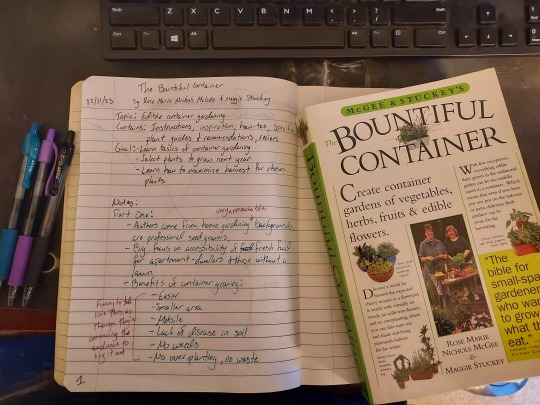
Note how I'm using bullet points to keep my thoughts organized and separated. You can also see the purple writing that denotes my less organized, in the moment thoughts and feelings on what's being said in the book. Here, the black pen is the template, the teal is the facts presented by the book, and purple is my personal commentary.
You don't have to divide your commentary and factual notes, by the way. I do it because I want to easily delineate between what's actually being said by the authors and what I'm thinking in the moment about what's being said. Sometimes, I'll write them as I have in the above example, in the margins or next to the factual stuff. Other times, I'll write them in line as a dedicated bullet point. It all depends on when I have the thought.
Another Example - Spell Notes
"But what about spells?" I hear you hypothetically asking. I'm glad you've hypothetically asked, dear reader! A very similar approach can be applied to writing notes on spells.
For the purposes of this example, I'll actually show off an updated version of the notes for my Pickled Pickle Hex. Note that this isn't my actual notebook or grimoire, since those are for my eyes only.
For spells, my ideal layout includes:
The name of the spell as the title
The date in the upper left corner
The page number as described previously
The source of the spell
Type of spell (hex, protection, edible, jar, candle)
Purpose of the spell
Ideal timing, if applicable
Ingredients
Instructions
Space for notes before, during, and after the spell (during/after notes may be recorded separately)
And here's the visual example:

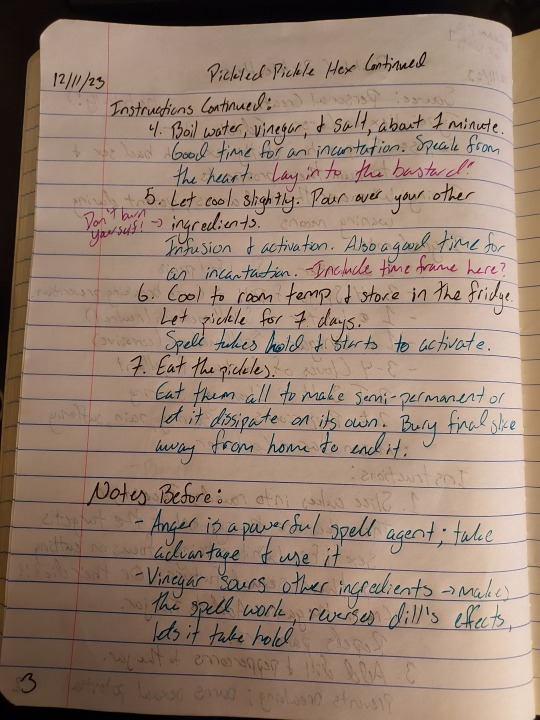
Note again how the template and basic information is all in black. This color is all business, detailing the actual, physical steps taken for the spell. The teal pen describes the magical parts -- ingredient correspondences, magical acts, incantation locations, etc. In the actual version, I include the incantation itself here. Then, the purple pen is my thoughts while recording it. It's mostly me talking to myself, but note under number 5 in the second image where I ask, "Include time frame here?" It's a note to self to consider where to add an expiration or expected end date during the casting process.
Again, you can include whatever you want. My original notes have doodles and copious notes in the margins... plus ingredients I needed to pick up for the spell. You can include whatever notes you need to. If it's relevant in the moment, write it down.
Recording Spell Results
A big part of note-taking for me is writing down how things work and how it all went. After all, why would I want to cast a spell again if I didn't enjoy it and it didn't work?
It's important to keep notes during your casting. I would suggest tracking the following:
Thoughts and feelings you have (nervous, tired, happy, angry, "I'm hungry," "I should've brought water with me," etc.)
Messages you receive from spirits or other entities
Odd things you notice (wax dripping strangely, shapes in the incense smoke, sounds nearby, increased pet activity, tarot cards jumping)
Alterations to prescribed steps, ingredient substitutions, added or removed steps or actions
Questions you have during the casting and answers if you look them up immediately
Concerns that come up regarding efficiency, energy levels, whether you're "doing it right," missing ingredients, and so forth
How the final result turns out (how it looks, how you feel about it, etc.)
What your next steps are (hiding it, burying it, setting it on your altar, eating it, etc.)
During this stage, particularly for that last bullet point, decide when you'll come back to this spell to check how it went. Sometimes, it isn't possible to test your results (hexes on someone you don't see consistently, for example). Even so, you should still return to the spell to record how you feel, what you think with hindsight on your side, and so forth. If you can tell how the spell worked, write down what happened and why you believe it's connected to the magical working.
If you like, you can make additional notes on the spell and steps themselves. What I do is I put a note under the post-casting section that says, "Additional notes written [date] in this pen color." And, true to form, it'll be a different pen color to everything else I've written with so far.
Again, remember that these notes aren't final. They're experiments and study notes, not grimoire pages. These notes are what your grimoire will be based on. Once you feel confident with a spell, write it into your official grimoire using your layout and medium of choice. In my case, this means typing up the final, expanded version of my notes and spells.
Conclusion
Look, in the end, it doesn't matter how you're writing stuff down. All that matters is that you're writing it down. Keeping it organized makes it easier to use later. Do what works for you.
Here are a few suggestions for note-taking methods and applications that have fed into my philosophies:
Bullet journaling - This ended up not really being for me, but a lot of the ideals are really appealing. This is where the templates idea came from.
Lab notebooks - By far the biggest influence. I highly suggest all magical practitioners give the lab notebook method a try, especially for testing spells and recording results.
Writing prompts - No, really. Using writing and spell prompts to build out and test my note templates was critical when I was trying to figure out how best to set things up. It's a low-effort way to bang out a bunch of ideas and refine layouts.
Spell books - Obviously. Take a look at how authors lay out their spells. It's organized, easy to parse, and includes details about the working. That's ideally what your notes should mimic.
Obsidian - This is an application for taking notes. It completely replaced my massive, disorganized folder of Word documents. Link between pages, tag documents for easy sorting, embed content from reference websites, draw brain maps, organize folders, use add-ons to create templates... Obsidian has literally been life changing. I use it for everything, including my grimoire. You have to pay for it, but it's very worth it. A second brain, indeed.
Try different layouts, formats, methods, mediums, everything. Hell, write notes on what works and what doesn't for your note-taking. You gotta start somewhere.
If you like my work, consider throwing a tip in my tip jar! Your support helps me keep making posts like this one. Plus, supporters got access to the full version of this post a full week early! That could be you for as low as $1.
#witchblr#witchcraft#witch tips#beginner witch#note taking#aese speaks#taking notes#grimoire#for beginner witches#resources#research
1K notes
·
View notes
Photo
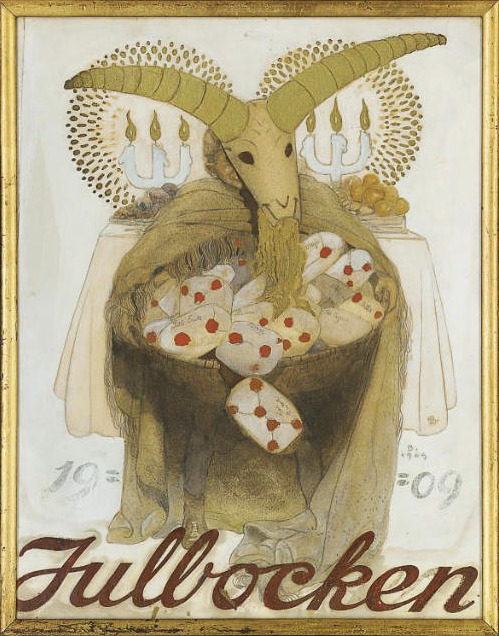
#julbocken#john bauer#scandinavian folk tradition#yule goat#julbock#traditions#illustration#swedish folklore#swedish art#yuletide#jul
520 notes
·
View notes
Text



THE LADY IN QUESTION (1940)
268 notes
·
View notes
Text
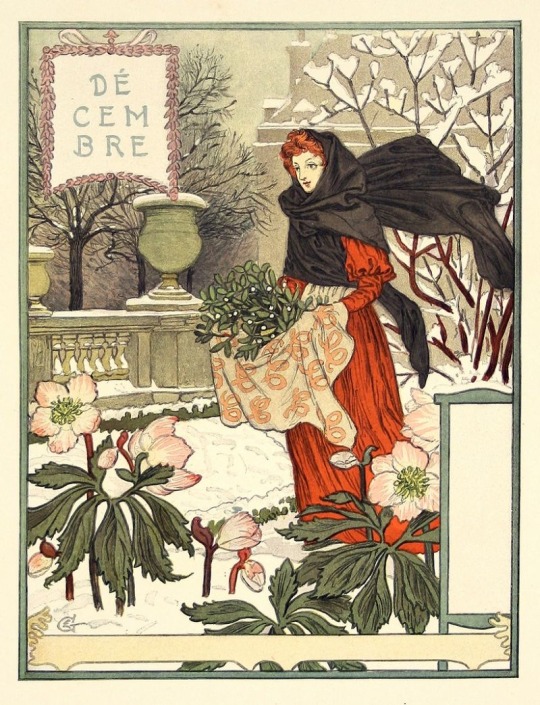
13 notes
·
View notes